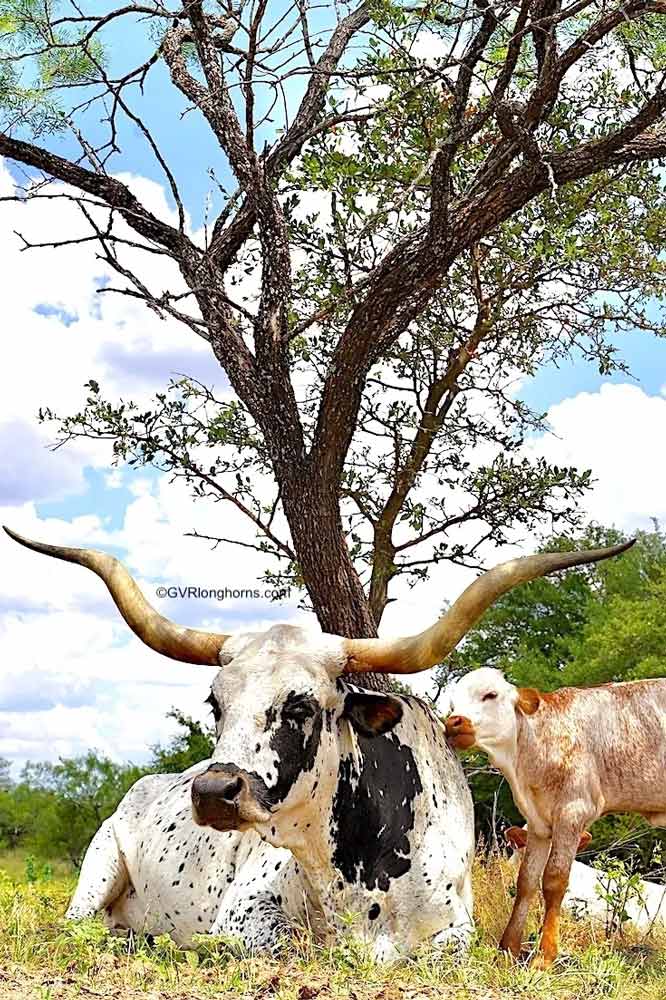
There are however two distinctive qualities that we feel deserve more emphasis. Both qualities are inherently genetic to the Texas longhorn breed. They set the breed apart in terms of our herd’s health management and our overall peace of mind and explain why the popularity of Texas longhorn cattle is an ever increasing trend.
1. Calving Ease in Texas longhorn cows
- It is no secret that Texas longhorn cattle are well known for their ability to calve with ease,
- Texas longhorn calves have lower birth weights than many other breeds of cattle reducing the probability of calving difficulties.
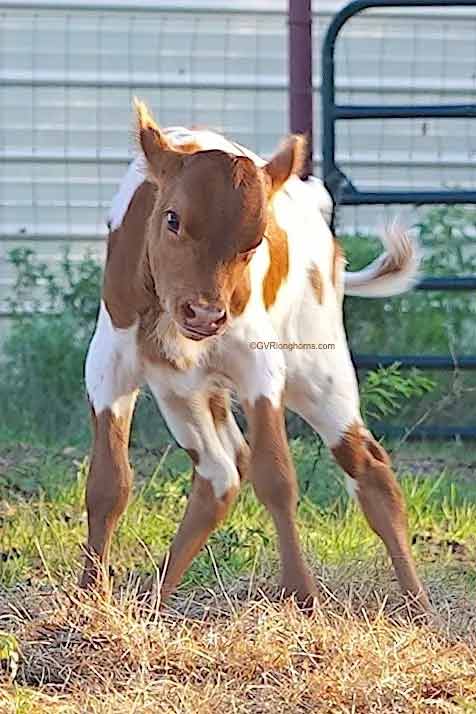
- Texas longhorn cows are anatomically and genetically well suited for calving and prefer to birth in isolation. They rarely needs assistance with birthing, if ever.
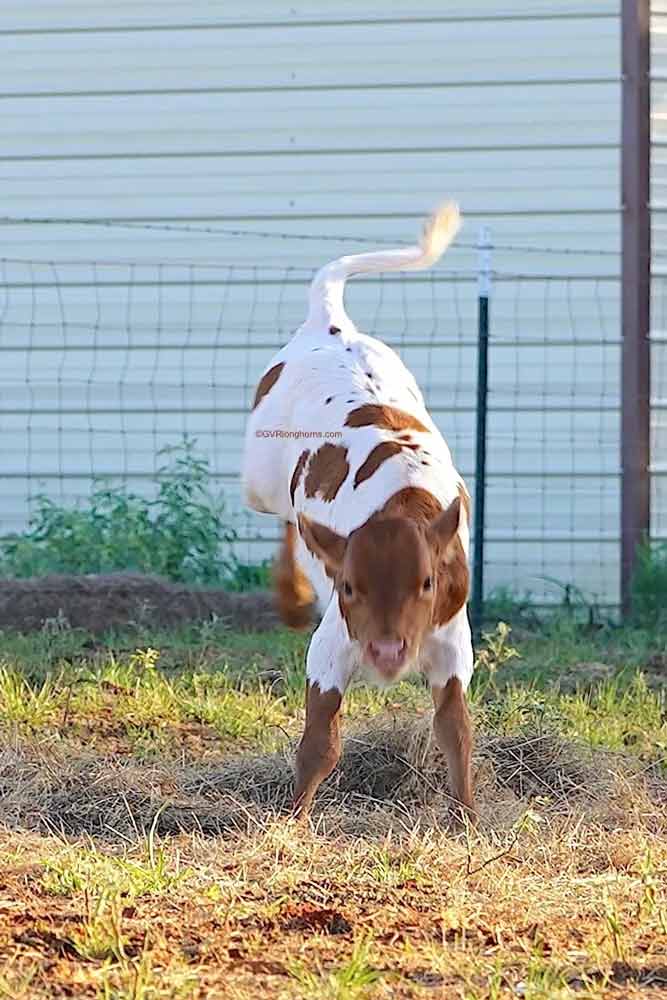
- A healthy birth decreases the risk of injury and fatalities in cows and heifers and significantly reduces the occurrence of calf deaths during birthing and newborn calf losses.
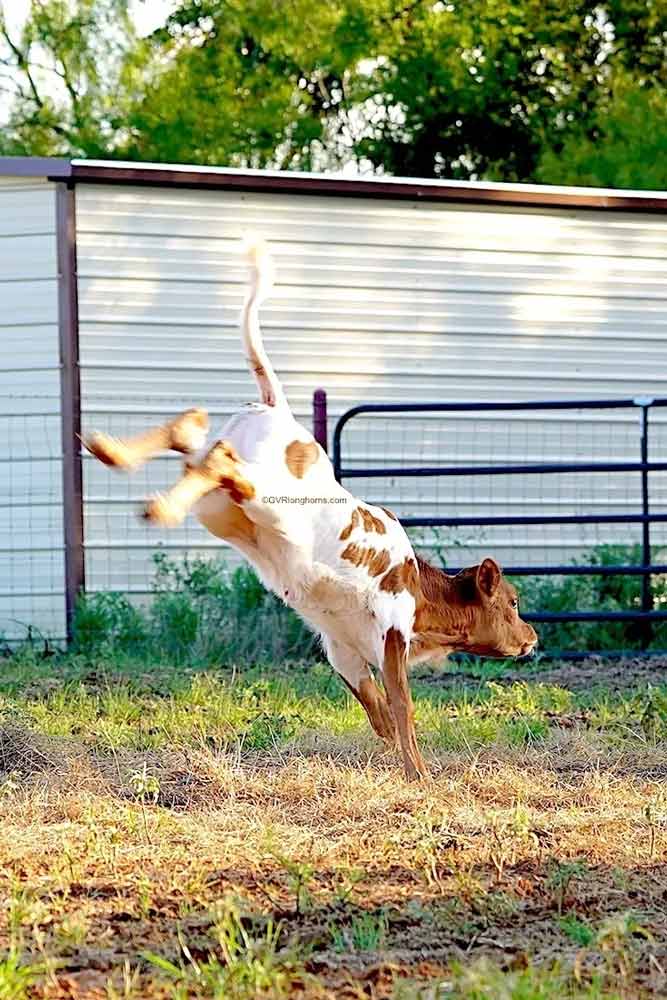
Why is Calving Ease so important?
- This inherent characteristic is well documented as a benefit to the cattle themselves but is less often elaborated on in terms of the benefit to the rancher.
- Dystocia occurs when a cow or heifer experiences difficulty calving. A leading cause for this difficulty is maternal/fetal disproportion or in other words, when the calf is too large to be delivered without assistance. Dystocia is a major cause of loss and ultimately death in cow/calf herds.
- It is true that Dystocia ( abnormal or difficult birth) is higher in dairy cattle than beef cattle. None the less, an article published in September 2019 in the Bovine Veterinarian suggests rates as high as 50% in first calf dairy heifers and around 17% in beef heifers which is not insignificant. ( Dystocia in Heifers takes its toll, M. Hanson)
- The economic impact on ranchers is not only limited to the loss of a cow or calf and veterinary fees. Studies indicate that losing a calf affects the rate of pregnancy in the future. (Calving emergencies in Beef cattle)
- Further, in answer to the question, ” Which breed should I choose?” The University of Georgia Extension noted some general trends regarding pure bred and commercial beef cattle and suggested that faster growth leads to larger birth weights which in turn result in increased potential for calving difficulties.
- Almost always, articles covering the incidence of Dystocia and calving management, cite genetics of the bull and the cow/heifer as a cause for caution in reducing injuries, abnormalities and losses. Texas longhorn cattle underwent a process of natural selection. The genetics of the Texas longhorn breed is a result of ‘survival of the fittest.’
The ease of calving is an inherent genetic trait in Texas longhorn cattle.
( For more on the History of Texas longhorn cattle.)
- In our own cattle ranching experience, we feed our heifers natural forage and hay depending on the season and we do not supplement their diets other than with minerals. To date, we have not ever had a need to assist with the birth of a Texas longhorn calf, nor have we lost a newborn calf after delivery.
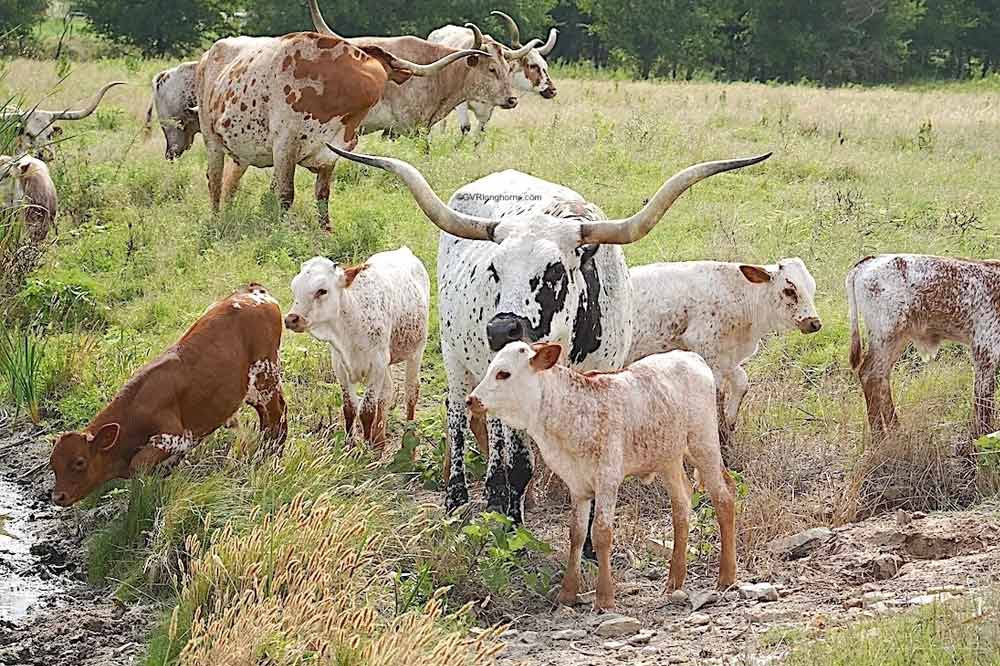
2. Maternal instinct in Texas longhorn cows
The definition of Motherhood (as an adjective) –
“having or relating to an inherent worthiness, justness, or goodness that is obvious or unarguable:” dictionary.com
‘To mother’ is a profound action for us humans, the definition of which we either experience, promote, yearn for or fall short of.
Yet, no matter our exposure, our concept of motherhood fundamentally shapes our world and our impact in it.
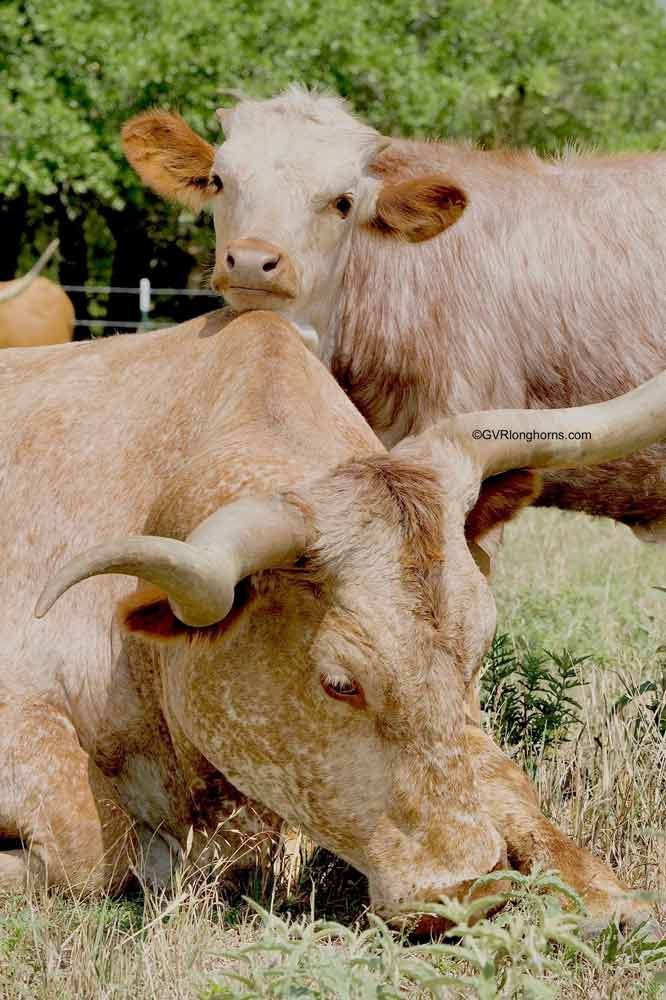
So essential is this subject to us humans, it is rarely considered on a deep emotional level when discussing bovines.
** Afterall, most people associate cattle with milk or beef. **
Texas longhorn cattle are often characterized as having good maternal instincts.It is expected that nature will take its course and cows will mother their young. In fact what we have observed from our time spent in and around our herd is substantively more profound.
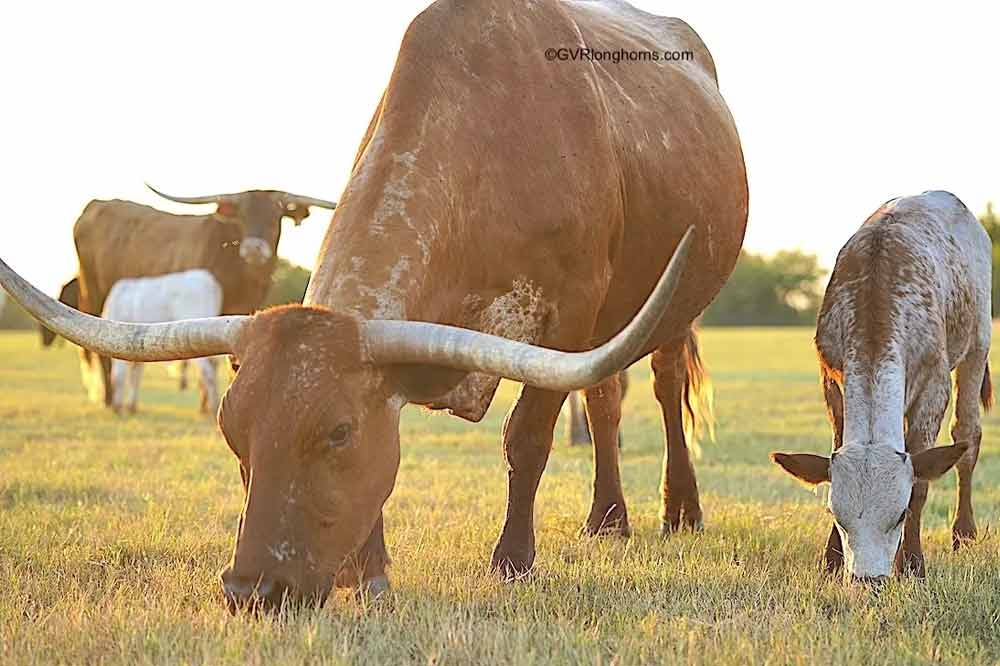
- All our cows are not good mothers. Without exception, they are excellent at mothering their calves from birth and continuing into adulthood.
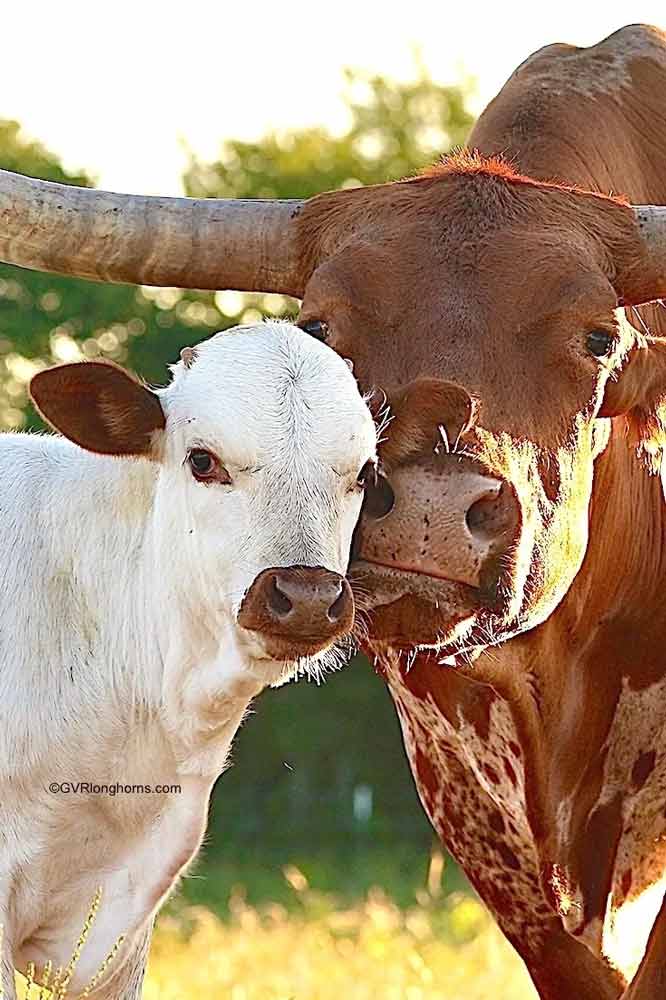
- Within hours of calving, the dam will move with her newborn calf from the place of birthing allowing the calf to exercise its new legs and simultaneously distancing it from smells that would attract predators.
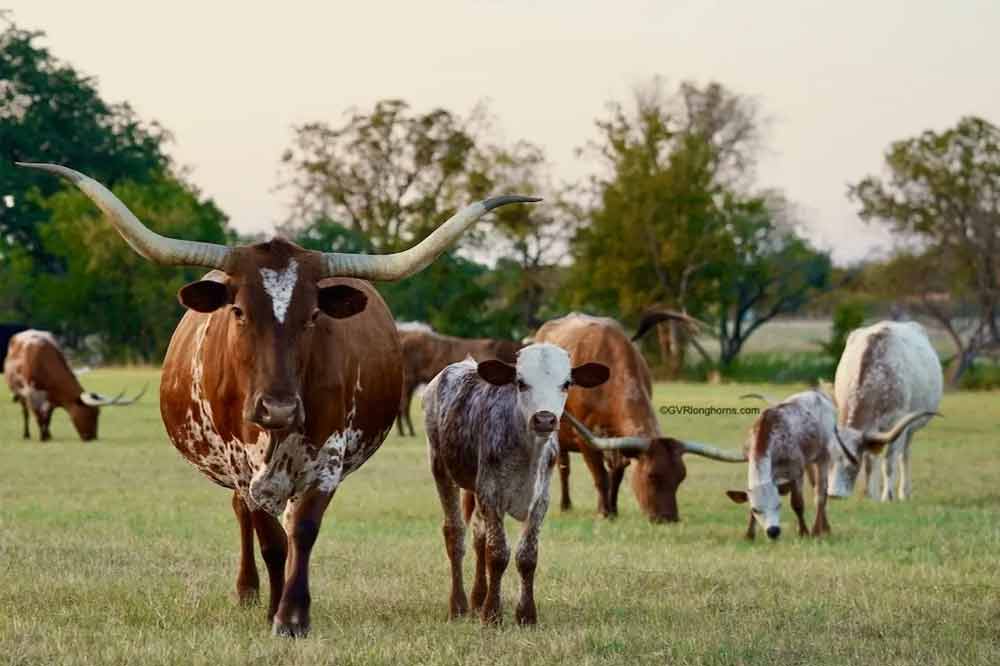
- Mothers seem to group themselves on the outskirts of the herd, forming a nursery of calves. They will use their horns to protect their young and the young of others if they sense imminent danger. Although our neighbors experience calf losses to coyotes, we have not, even though we hear coyotes most nights and see them from time to time, passing through our property.

- Texas longhorn cows seem to thrive with babies by their side. They communicate with their calves throughout the day. They bathe their calves delicately on a daily basis. However, they will not hesitate to discipline their babies if warranted.
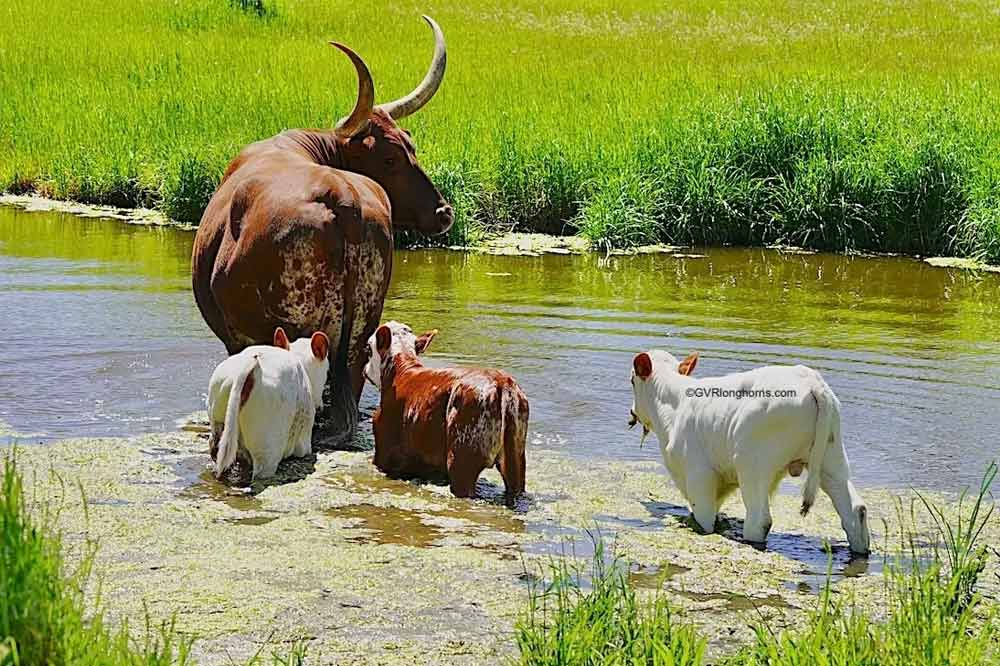
- Some cows are more protective than others but all calves learn to fend for themselves at a relatively early age. They seem to have confidence in their independence whilst under the watchful eye of their mothers even if that is at a distance.
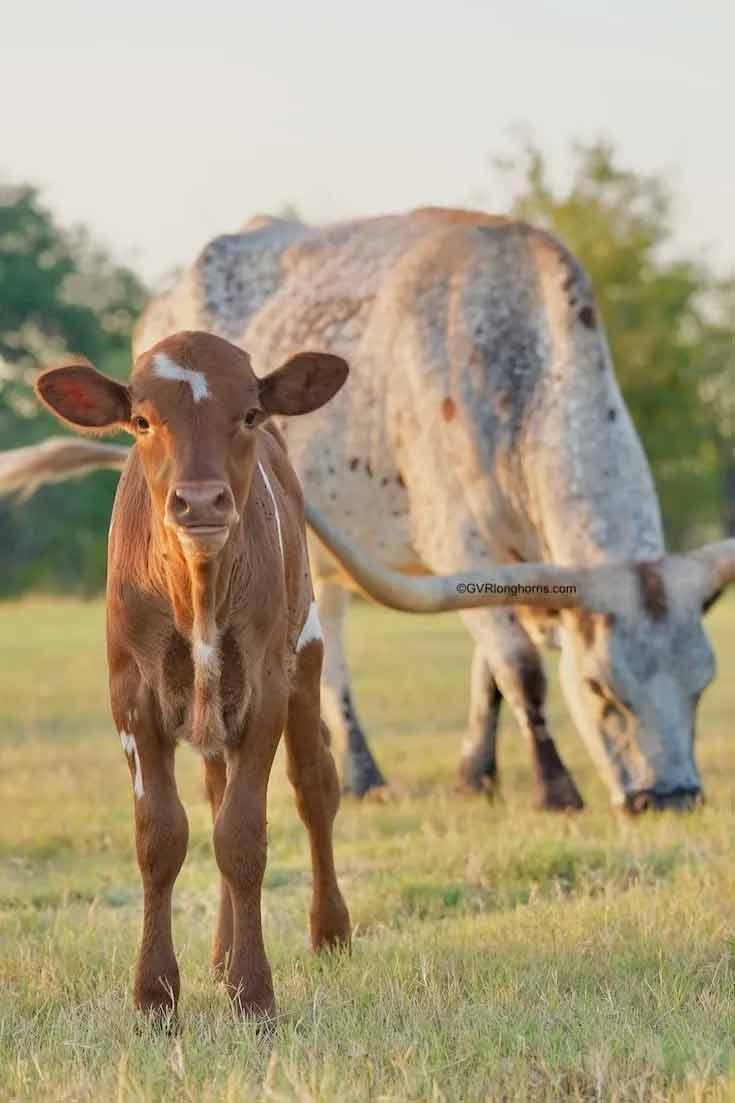
- Even more fascinating, perhaps because of my previous child development and psychology studies, is the bond Texas longhorn cows have with their offspring throughout life. Bearing in mind that some of our Texas longhorn cattle keep their distance from some in the herd, mothers seem to always get the balance of motherhood right. No matter their age, both males and females will show visible bonds with their mothers as long as they are in proximity to each other. This may well be the case with other breeds of cattle, but we can say without exception that family units form microcosms within the larger herd and these last for life.
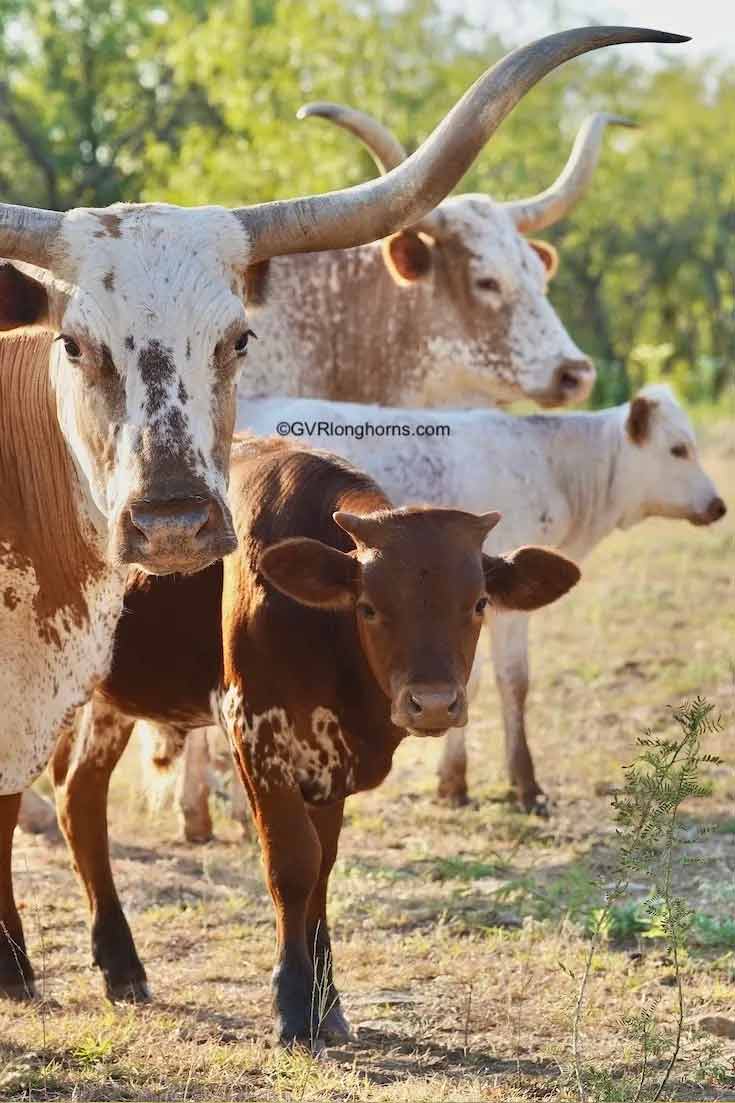
CONCLUSION: Texas longhorn cattle have inherent genetics that safeguard the breed from costly losses. Time is money and reducing the time one spends with a herd is in itself cost effective. Similarly, keeping veterinary costs down is ALWAYS a bonus.A cattle ranch’s financial gains and losses correlate strongly with overall herd health and well being and therefore, considering the savings as a result of the genetic strength of Texas longhorn cattle is not only smart but can be more worthwhile than one may think.
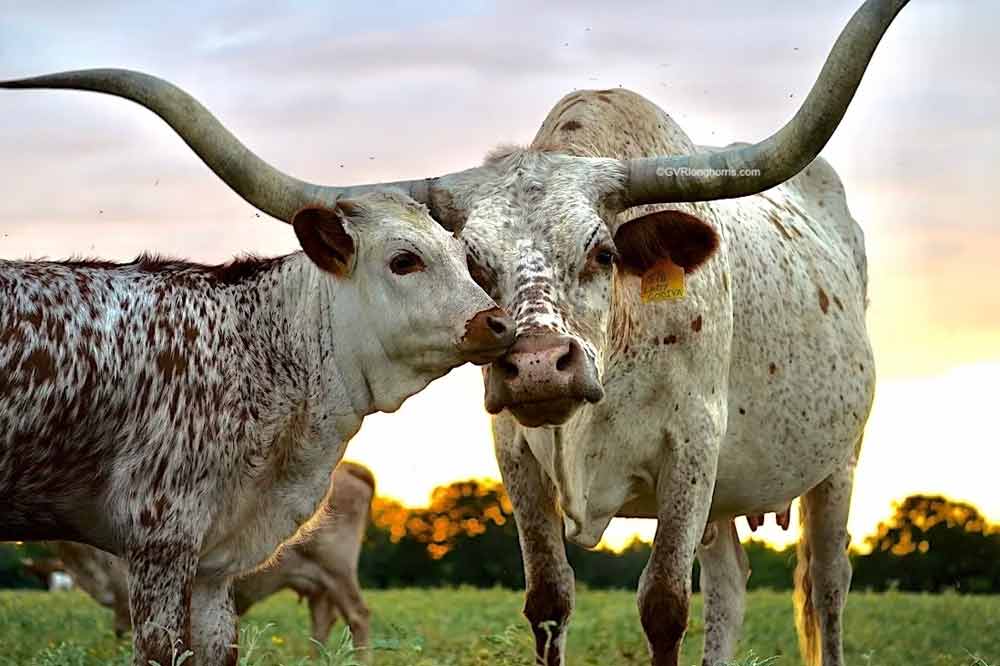
Additional note: A herd number makes it possible for a rancher to differentiate one cow from another even in breeds that look the same. It is because Texas longhorn cattle look different from each other, that it is easier to tell them apart and observe specific animal behaviors, their individual characteristics, specific skills and their relationships within a herd whether or not that herd is big or small. Nonetheless, it is required that Texas longhorn cattle must be branded with a herd number to be registered. In addition to a herd number, Texas longhorns are often registered with their own unique name. Although we have a relatively large herd of Texas longhorn cattle, we can differentiate each animal from a distance. We also know each animal by name and their specific quirks and characteristics. In turn, some of our animals know their names and will come to us when called individually. Of course, there is always that one, or two, that will ignore us unless a snack is involved……then everybody is our friend.
References:
https://www.ers.usda.gov/publications/pub-details/?pubid=90984
https://www.agdaily.com/livestock/top-10-cattle-breeds-united-states/
https://www.bovinevetonline.com/
https://extension.uga.edu/publications/detail.html?number=C859&title=Selecting%20a%20Beef%20Breed#
Disclaimer: All material noted above is based on our hands- on experience as ranchers, as well as our observations of our own cattle over the years. We have done and continue to do extensive research in order to maintain our herd‘s optimum health. However, all opinions and statements made on our website are meant as guidelines only. We are not qualified statisticians/ veterinarians and urge you to consult a specialist with your concerns. Content of this blog belongs to GVR Longhorns LLC and may not be copied in any form. ©GVRlonghorns.com All rights reserved.
